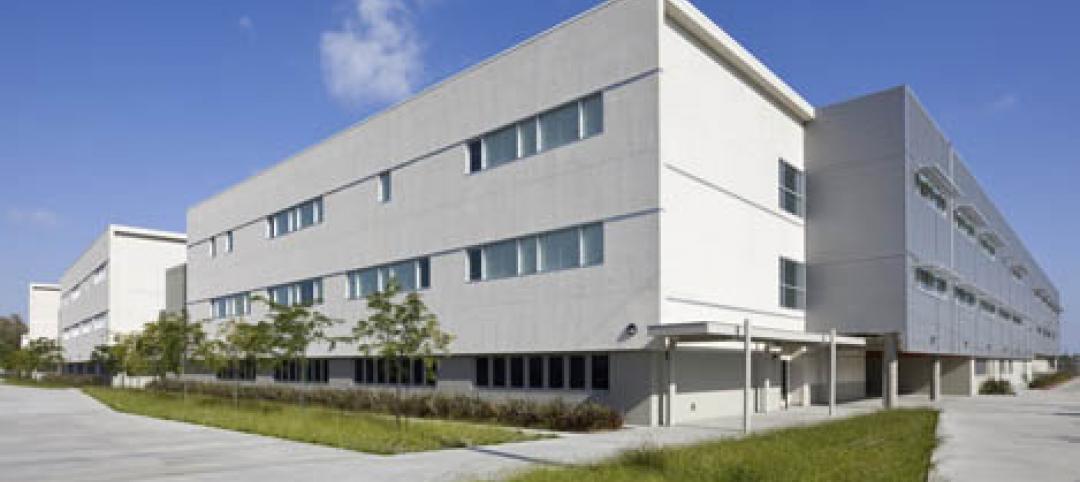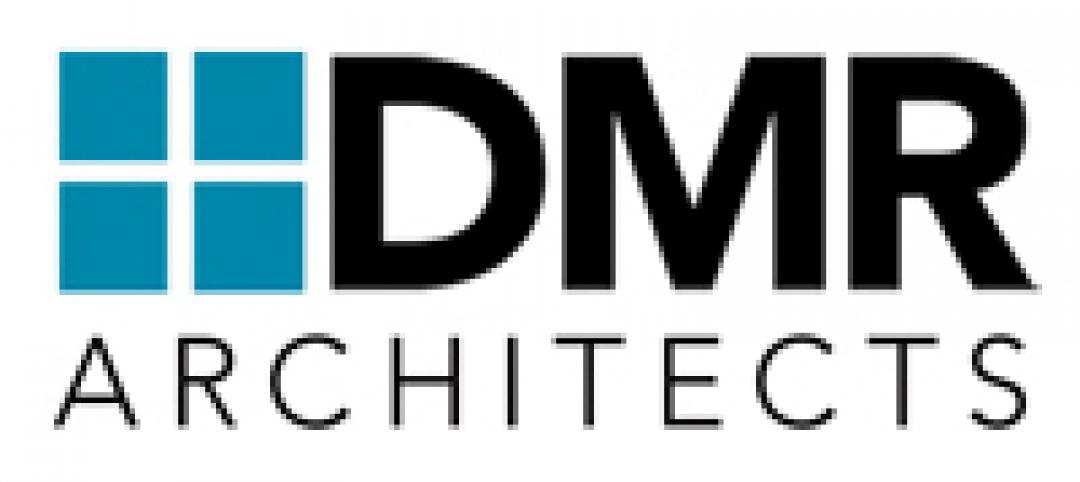To the unndoctrinated, the construction industry conjures images of hard hats and ditch digging. In my years of experience speaking with teachers, students, and up-and-coming generations of workers, time and time again they are surprised to learn that a career in construction can be so much broader and more fulfilling than the stereotypes associated with the trade.
While the industry has made great strides to move beyond a stereotypical view of careers in construction, there is still work to be done to attract, and more importantly, retain, talented workers. Younger generations aren’t just interested in a job, they are seeking career opportunities. They desire to grow, engage meaningfully in their work, and be passionate about what they’re doing. They also want to have a say and be heard.
Flipping Construction Mentoring on Its Head
There’s a unique opportunity for the construction industry to leverage reverse mentorship to retain workers and prepare them for leadership roles while challenging the thoughts and actions of current leaders to improve the culture and operations now and in the future.
Everyone’s familiar with mentorship, where a more senior-level staffer imparts his or her years of wisdom, experience, and council to a younger colleague. Reverse mentorship recognizes that the younger generation has something to offer, too. The added benefit of reverse mentorship is helping seasoned professionals develop new skills, stay connected with younger generations, and gain future-forward insights for life and business.
Relationships between senior and young professionals can be an eye opener for both parties with some crucial benefits supporting today’s business challenges.
Expanding awareness of operations and opportunities. We’ve all heard the saying ‘you don’t know what you don’t know.’ All too often, there’s an information gap between junior and senior staffers, with the junior staff only getting a limited view of the business or projects and senior staffers not fully understanding the breadth of talent on the bench.
Reverse mentoring relationships help connect the dots between junior staffer’s skills and interests and opportunities that they may not have even realized existed in construction. When they know about the possibilities, they can begin to take control and be purposeful in driving their career toward the achievement of a specific goal.
Taking the time to learn more about what young team members are capable of and have interest in, allows senior leaders to identify areas of interest and tailor learning opportunities accordingly. Exposing junior staffers to more prepares them to tap into, and eventually step into, a host of roles. This can be an important part of succession planning.
Room for Diverse Perspectives. Reverse mentoring creates space for diverse perspectives to be heard. Women are the most underrepresented members of the construction workforce. And attracting more women to the construction industry has been a long-standing struggle. The intimate nature of a mentoring relationship makes it possible to dig a little deeper to draw out fresh perspectives and help minority members of the company feel valued and heard.
Creating new pathways to problem solving. As more diverse workers come into the construction industry, with them comes new and valuable perspectives and ways of thinking. It’s crucial to draw those perspectives out and give them space to grow.
Reverse mentoring exposes senior professionals to fresh thinking about the future. Inevitably, we enter ruts and get stuck. We do what we know and what’s comfortable rather than challenge assumptions. Companies that want to improve will seek input from fresh sources: young, old, male, female. No idea is a bad one. Make every meeting and conference room a safe place to elevate new thinking.
This way of approaching problems has served Compass Datacenters well, resulting in major changes that were hard to implement at the outset but serve customers well in the long run.
Advice for implementing reverse mentorship in construction
Start Small. One of the biggest pieces of advice for mentoring of any kind is to know your limits and don’t overcommit. Each season will have a different set of priorities and time restrictions. Be realistic about your schedule and how much time you have available to dedicate to your new relationship. If you don’t have the capacity to commit to attending evening seminars or professional events, consider an in-person lunch or coffee that aligns with your work schedule.
Find the right match for you. It’s important to connect with someone who shares your professional passions; these could be hard or soft skills. Finding the right match for reverse mentorship is all about growing a relationship with someone you respect and connect with. The best mentorship relationships aren’t necessarily between those within the same segment of the industry either. Learning about other areas helps both parties better understand the bigger picture and how each area is connected.
Be authentic and ready to learn. The most important component of reverse mentorship is the relationship itself. In a recent Breaking Glass podcast (a production of Compass Datacenters), I spoke with a colleague about the importance of building your personal board of directors—a group of professionals you can turn to for advice and counsel. In many ways, reverse mentorship is an opportunity to build your board and get well rounded input from colleagues.
The construction industry benefits from relationships and communication. What makes reverse mentorship truly successful is 1) a willingness to be authentic, 2) the act of sharing why you love what you do, and 3) staying interested in hearing other people’s stories.
As the industry continues to grow, it’s critical to prioritize relationships and continuous learning. The best way to prepare for the future of the construction industry is to build relationships with and learn from the next generation.
ABOUT THE AUTHORS
With more than 30 years of experience in the construction industry, Nancy Novak brings extensive expertise in oversight and responsibility for Profit and Loss. In her current role as Chief Innovation Officer for Compass Datacenters, her focus is cutting edge technology, lean practices, and innovative culture through diversity of thought to add value, improve return on investment, and disrupt the construction industry. Nancy serves on the Board of Directors for Weston Solutions, a global environmental firm. She is heavily involved in organizations that lead the way for technological advancement in the construction industry, and she is an advocate for women’s leadership. Nancy currently serves as the Board of Director Vice Chair on the National Institute of Building Sciences BIM Council, as well as Executive Sponsor for the Digital Divide on the iMasons Advisory Board. She is also the host of the “Breaking Glass” podcast, which features Nancy’s dynamic conversations with prominent women in the technology industry—a forum where these accomplished women offer insights, advice and inspiration that listeners can apply to their own professional lives.
Tiffany English is Senior Director, Architecture for Qualcomm Incorporated. Qualcomm is the world’s leading technology innovator. With Real Estate Assets over 12 Million square feet in 30 countries and 40,000+ employees globally. Qualcomm’s breakthroughs in 5G are making the world more connected while making an impact on society and world’s biggest challenges. Tiffany’s role at Qualcomm is oversight of the companies architectural, interior design, space planning, facilities planning, lab planning and MEP engineering teams globally. Tiffany has more than 24 years of industry experience and has overseen, designed, and managed over 7 million square feet of projects for commercial real estate and Fortune 500 clients. Tiffany is currently serving as Immediate Past President of CREW Network, 2021. CREW Network represents 75+ markets and over 12,000 members globally. CREW Network continues to transform the commercial real estate industry by advancing women globally.
Related Stories
| Nov 8, 2011
WEB EXCLUSIVE: Moisture-related failures in agglomerated floor tiles
Agglomerated tiles offer an appealing appearance similar to natural stone at a lower cost. To achieve successful installations, manufacturers should provide design data for moisture-related dimensional changes, specifiers should require in-situ moisture testing similar to those used for other flooring materials, and the industry should develop standards for fabrication and installation of agglomerated tiles.
| Nov 8, 2011
$11 million business incubator Florida Innovation Hub at the University of Florida completed by Charles Perry Partners, Inc.
The facility houses the UF Office of Technology Licensing, UF Tech Connect, other entities, and more than 30 startup technology tenants.
| Nov 8, 2011
Designer joins Holabird & Root
Clifton has been awarded numerous awards throughout her career, including two AIA Chicago Design Excellence Awards.
| Nov 4, 2011
Mortenson Construction builds its fifth wind facility In Illinois
Shady Oaks Wind Farm is under construction near Compton, Ill.
| Nov 4, 2011
McCarthy completes construction of South Region High School No. 2 in Los Angeles
Despite rain delays and scope changes, the $96.7 million high school was completed nearly two-months ahead of schedule.
| Nov 4, 2011
Two Thornton Tomasetti projects win NCSEA’s 2011 Excellence in Structural Engineering Awards
Altra Sede Regione Lombardia and Bank of Oklahoma Center both recognized.
| Nov 3, 2011
GREC Architects announces opening of the Westin Abu Dhabi Golf Resort and Spa
The hotel was designed by GREC and an international team of consultants to enhance the offerings of the Abu Dhabi Golf Club without imposing upon the dramatic landscapes of the elite golf course.
| Nov 3, 2011
Hardin Construction tops out Orlando Embassy Suites
The project began in April 2011 and is expected to open in fall 2012.
| Nov 3, 2011
2012 Pritzker Architecture Prize Ceremony to be held in China
The tradition of moving the event to world sites of architectural significance was established to emphasize that the prize is international, the laureates having been chosen from 16 different nations to date.
| Nov 3, 2011
DMR Architects welcomes two new staff members
Siro Gonzalez joins the staff as junior graduate architect and Megan Byers joins the staff as marketing assistant.
















